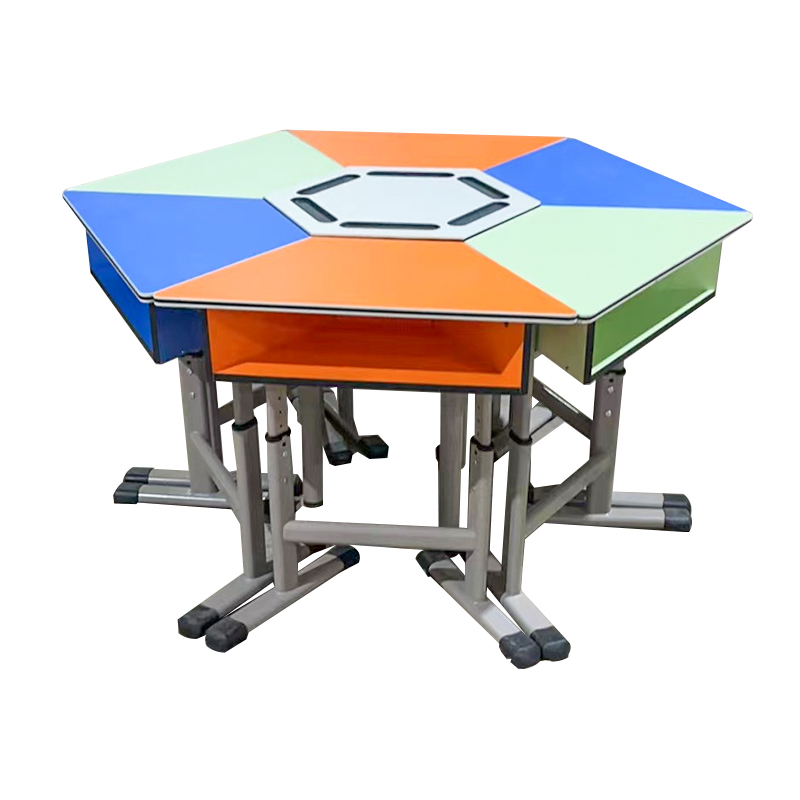
Classroom design has a significant influence on how students learn and interact. As teaching methods evolve toward active, student-centered learning, the physical arrangement of the classroom must adapt as well. One important change in modern classroom setups is the growing use of group learning collaborative classroom tables and chairs. These furnishings are designed to support group interaction, peer-to-peer discussion, and cooperative learning, all of which contribute to greater student engagement.
Traditional classroom layouts, where desks face the front and students work individually, often limit communication and collaboration. In contrast, a group learning collaborative classroom table and chair setup encourages students to interact with their peers. By sitting in clusters or around circular or modular tables, students are naturally encouraged to share ideas, ask questions, and work together toward common goals. This setup mirrors real-world working environments, which often rely on team-based problem-solving.
The use of group learning collaborative classroom tables and chairs also supports a wider range of teaching strategies. Teachers can facilitate discussions, assign collaborative projects, or organize learning stations without needing to rearrange the entire room. The flexibility offered by these tables and chairs allows for smooth transitions between lecture, group activity, and independent work. As a result, students experience fewer disruptions and more opportunities for active participation during lessons.
Increased engagement is often observed when students feel that their input matters. Group seating arrangements allow for more frequent and spontaneous exchanges, which can give quieter or more reserved students a better platform to express their thoughts. Rather than being required to speak in front of the entire class, students can first discuss within their small groups, building confidence and reinforcing understanding. This dynamic can improve classroom inclusivity and participation across diverse learning styles.
The physical features of a group learning collaborative classroom table and chair setup also contribute to student comfort and focus. Ergonomically designed chairs, sufficient workspace for materials, and clear lines of sight to other group members help maintain attention and reduce distractions. When students are physically comfortable and can easily interact with peers, they are more likely to stay involved in the task at hand.
In addition to supporting academic goals, these classroom furniture designs help build essential interpersonal skills. Group learning settings require students to negotiate roles, manage time, resolve conflicts, and communicate clearly. These experiences are not only beneficial for immediate academic success but also prepare students for future collaborative environments in higher education and the workplace.
The layout of group learning collaborative classroom tables and chairs often fosters a sense of shared responsibility. When students work together, they tend to feel accountable to their peers as well as to the teacher. This shared responsibility can lead to higher levels of motivation, as students understand that their participation affects the group's progress. Teachers, in turn, can act more as facilitators, guiding the learning process rather than delivering information in a one-way format.
Another benefit of these classroom setups is the ability to adapt to different class sizes and subjects. Whether used in elementary classrooms, high school science labs, or university seminar rooms, group learning collaborative classroom tables and chairs provide a consistent foundation for student interaction. Modular or mobile designs allow furniture to be rearranged as needed, further supporting the evolving needs of modern education.
Incorporating group learning collaborative classroom tables and chairs into educational spaces can significantly enhance student engagement. These setups encourage communication, support flexible teaching strategies, and help develop interpersonal and problem-solving skills. As educational institutions seek to create more inclusive and active learning environments, attention to classroom furniture becomes an important part of the overall strategy for improving student outcomes.


 English
English русский
русский Español
Español عربى
عربى
